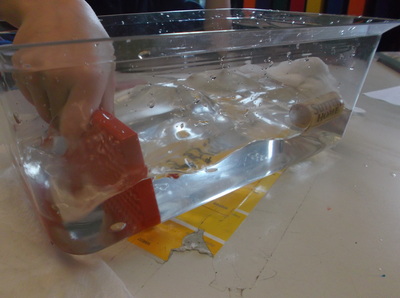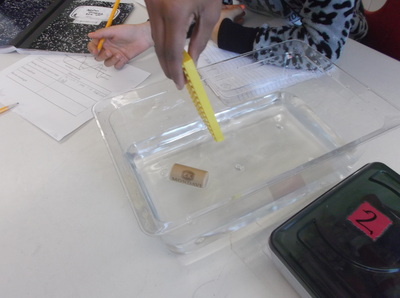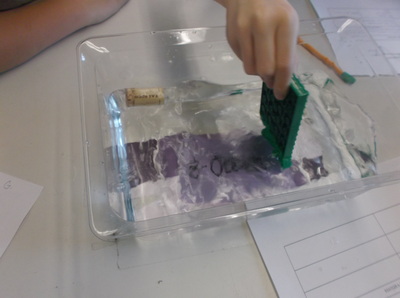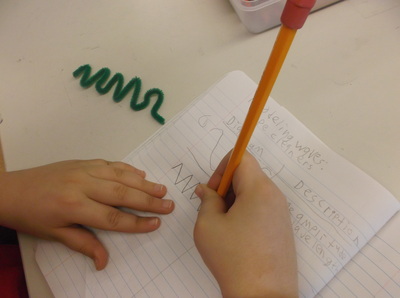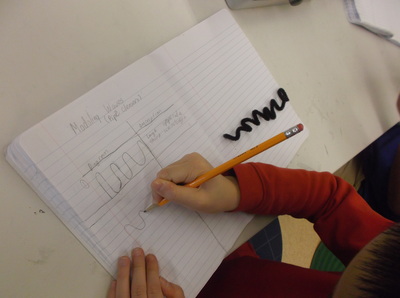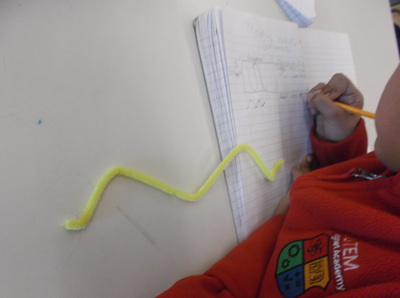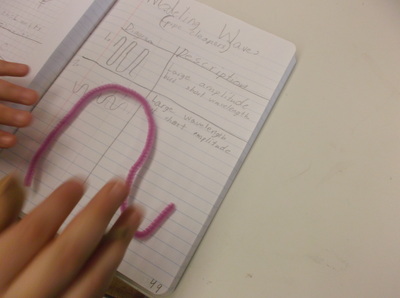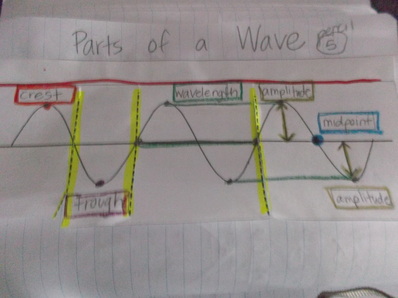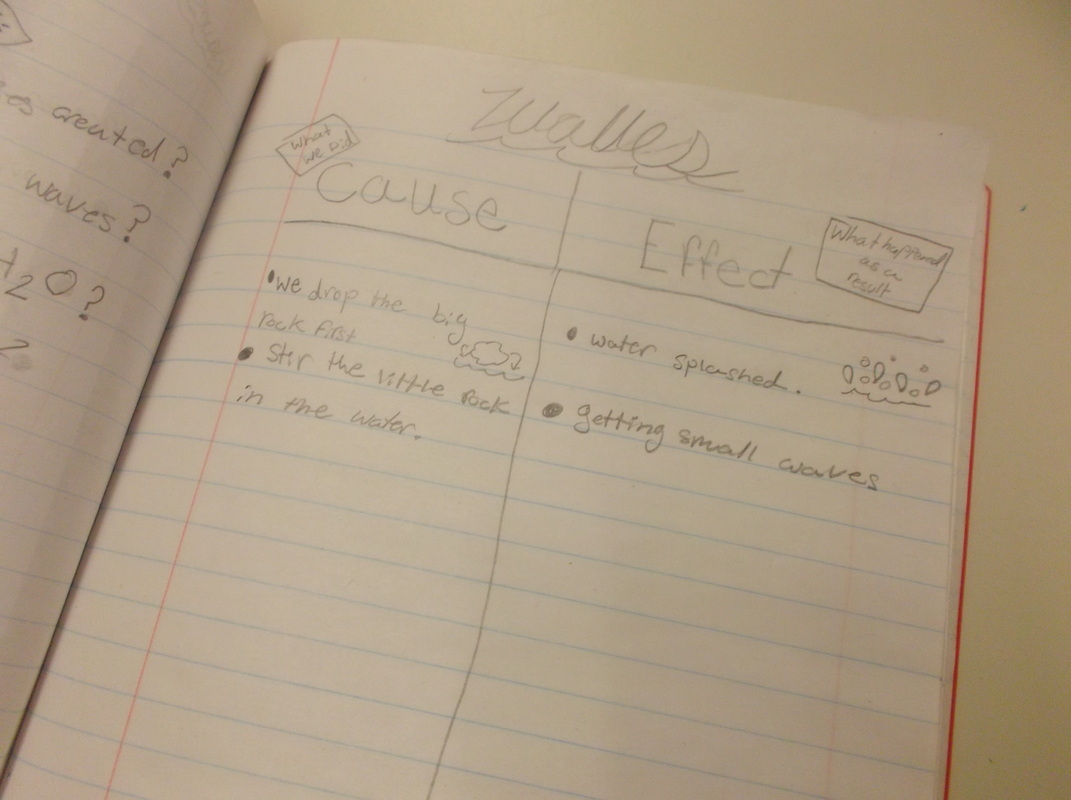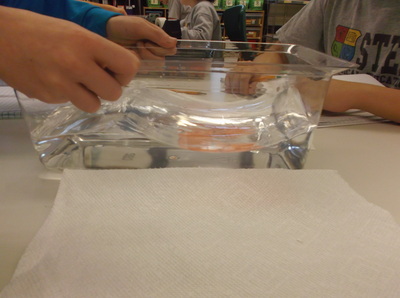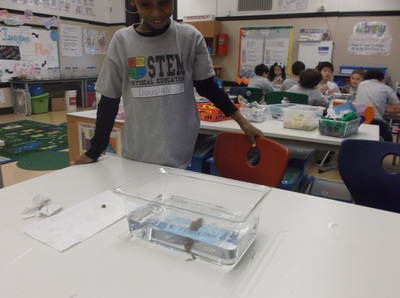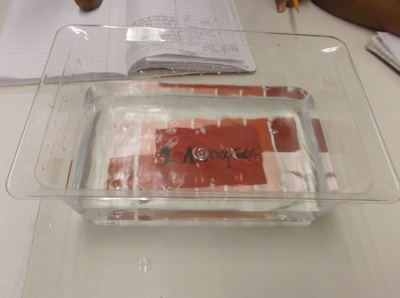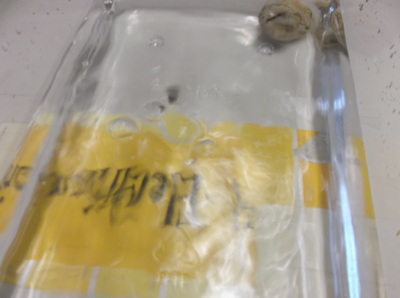Fourth graders are experts at wave parts--identifying differences in wavelength and amplitude. But what happens to objects and their motion as waves change? Creating waves with different amplitudes, they saw how waves can carry an object to higher heights. And creating waves with different amplitudes brought about a change in the speed in which an object reached the edge of the container.
|
Waves have different amplitudes and wavelengths...that's obvious! But could fourth graders create physical models of these waves and provide descriptions of their differences? Check out the fourth graders' work as they create waves with different properties!
After our waves experiments, fourth graders quickly realized that waves can travel at different speeds and that the sizes of waves can be very different. Waves can be big, yet travel slowly. They can be big, but move quickly.
This led us into seeing that there are specific parts to each wave we see and that identifying these parts can help us measure waves. Crest: The top of a wave Trough: The bottom of a wave Midpoint: The middle of a wave (in between the crest and the trough) Wavelength: How long a wave is from two identical parts (crest to crest, midpoint to midpoint, or trough to trough) Amplitude: How high (or deep) a wave is. We can specifically measure the wavelength of a wave by counting the number of units a wave is from crest to crest (or midpoint to midpoint, or trough to trough). We can specifically measure the amplitude of a wave by counting from the baseline (the imaginary line that runs through the midpoints) up to the crest or down to the trough. Waves can have the same amplitudes but different wavelengths. Simultaneously, they can have the same wavelengths but different amplitudes!
To kick off our unit on waves, fourth graders know quite a bit about waves already. Here are some of the responses we heard:
Waves can be big. Waves crash once they reach the shore. Sound travels in waves...and so does light! Sound waves aren't as fast as light waves! Waves can move fast or slow. Waves carry objects in them! We're off and running...check back soon to see how some of the questions students created in our KWL will be answered through investigations. :-) |
Mrs. BrinzaAsk your parents what the first phone they used was like? How has the telephone changed over their lifetime? How will it change during yours? |
